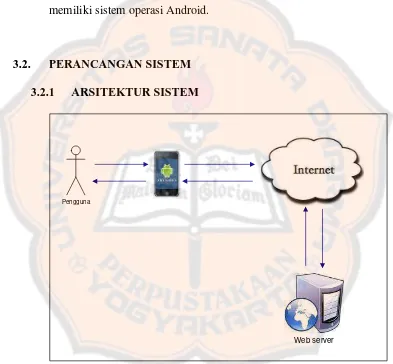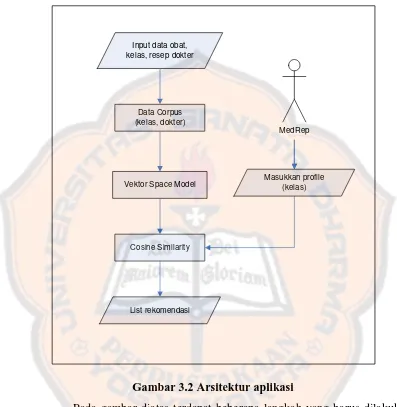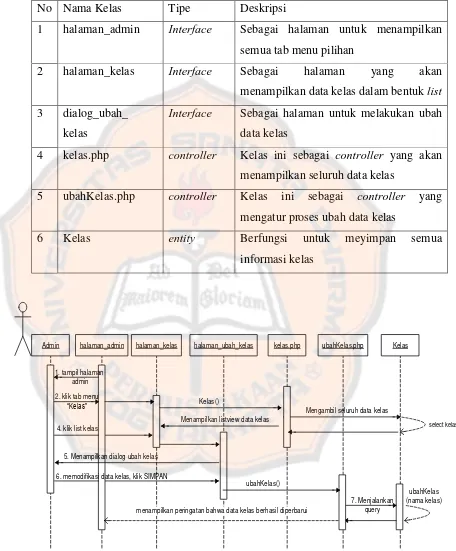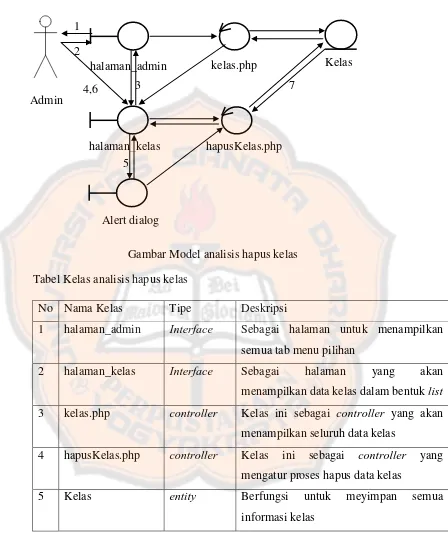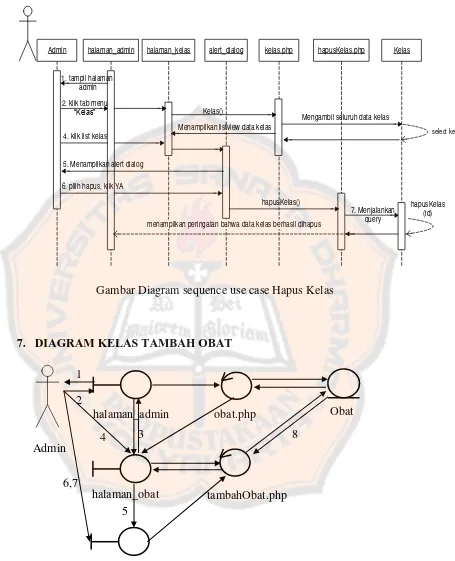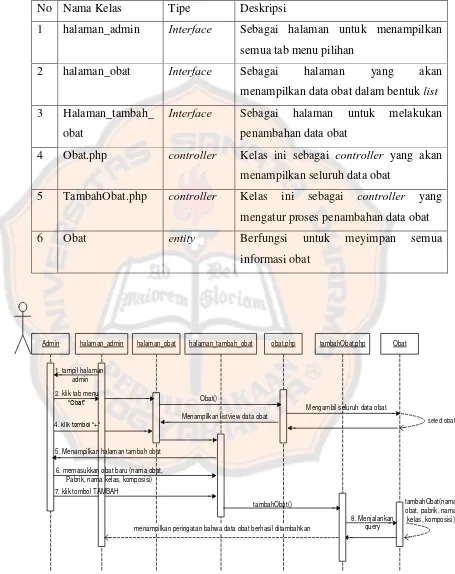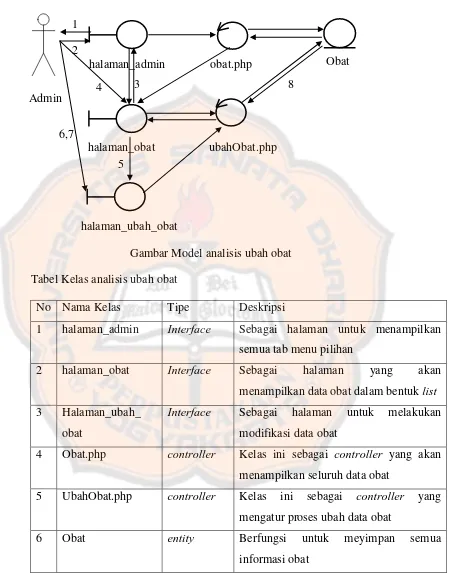Informasi Dokumen
- Penulis:
- Laurina Silvianty Dewi
- Pengajar:
- Bapak Puspaningtyas Sanjoyo Adi S.T., M.T.
- Bapak JB Budi Darmawan, S.T, M.Sc.
- Ibu Sri Hartati Wijono, S.Si., M.Kom.
- Sekolah: Universitas Sanata Dharma
- Mata Pelajaran: Teknik Informatika
- Topik: Sistem Rekomendasi Penjualan Obat Menggunakan Pendekatan Content Based Filtering Berbasis Mobile Android
- Tipe: Skripsi
- Tahun: 2013
- Kota: Yogyakarta
Ringkasan Dokumen
I. PENDAHULUAN
The introduction section outlines the significance of mobile devices in today's society, particularly in developing countries. It highlights the role of Medical Sales Representatives (MedReps) in marketing pharmaceuticals and the necessity for an application that assists them in accessing relevant information about doctors and hospitals. The proposed application leverages a Content-Based Filtering approach to recommend suitable doctors based on the profiles of MedReps. This section sets the stage for the research by establishing the problem context and the need for a solution.
1.1. Latar Belakang Masalah
This subsection discusses the increasing reliance on mobile devices for information retrieval in developing nations. It emphasizes the challenges faced by MedReps in gathering necessary information about healthcare professionals, thus necessitating the development of a mobile application that utilizes Content-Based Filtering to streamline this process.
1.2. Rumusan Masalah
In this subsection, the primary research question is articulated: How can the application effectively provide accurate information about doctors for MedReps? This inquiry focuses on the operational effectiveness of the recommendation system.
1.3. Batasan Masalah
This section delineates the scope of the research, specifying that the application will be Android-based and limited to data from Jogja International Hospital. This clear boundary is crucial for managing the project's feasibility and focus.
1.4. Tujuan dan Manfaat Penelitian
Here, the objectives of the research are outlined, which include developing an application that aids MedReps in identifying relevant doctors based on their profiles. The anticipated benefits include improved efficiency in marketing efforts and better-targeted outreach to healthcare professionals.
1.5. Metode Penelitian
This subsection describes the research methodologies employed, including literature review, software development processes, and performance testing. These methods are essential for ensuring the robustness of the developed application.
1.6. Sistematika Penulisan
The structure of the thesis is outlined, providing a roadmap for the reader. It includes sections on theoretical foundations, system analysis and design, implementation and testing, and conclusions, which collectively ensure a comprehensive understanding of the research.
II. LANDASAN TEORI
This section provides the theoretical underpinnings for the research, focusing on the concepts of recommendation systems, particularly Content-Based Filtering and the Vector Space Model. It establishes the academic context necessary for understanding the methodologies applied in the research.
2.1. Pengertian Sistem Rekomendasi
This subsection defines recommendation systems and their importance in helping users make informed decisions. It introduces the concept of predicting user preferences based on past interactions, which is vital for understanding how the proposed system operates.
2.1.1. Content Based Filtering
In this subsection, the principles of Content-Based Filtering are discussed, emphasizing its reliance on user profiles and item characteristics. This approach is pivotal for the application's recommendation mechanism, as it directly influences the relevance of the suggestions provided to MedReps.
2.1.2. Vector Space Model
This section elaborates on the Vector Space Model as a method for measuring similarities between documents and queries. Understanding this model is crucial for the implementation of the recommendation algorithm, as it forms the basis for calculating the relevance of doctors to MedReps.
2.1.3. Pengukuran Performansi
This subsection discusses performance measurement techniques, particularly precision and recall, which are essential for evaluating the effectiveness of the recommendation system. These metrics will guide improvements and adjustments in the application.
2.2. Android
This part introduces Android as the platform for the application, detailing its architecture and components. Understanding Android is necessary for developers and researchers interested in mobile application development, ensuring that the application is built on a robust foundation.
2.2.1. Arsitektur Android
This subsection explains the architecture of Android, including its layered structure and core components. This knowledge is essential for understanding how the application interacts with the Android operating system.
2.2.2. Komponen Dasar
Here, the fundamental components of Android applications are discussed, including Activities, Services, Broadcast Receivers, and Content Providers. Each component plays a vital role in the functionality of the application being developed.
2.2.3. Daur Hidup Activity
This subsection describes the lifecycle of Activities in Android, which is crucial for managing the user interface and ensuring smooth user experiences. Understanding these lifecycles helps developers create responsive and efficient applications.
2.2.4. Daur Hidup Service
This section explains the lifecycle of Services in Android, emphasizing their role in background processing. Knowledge of Service lifecycles is important for implementing features that require continuous operation without user interaction.
III. ANALISIS DAN PERANCANGAN SISTEM
This section focuses on the analysis and design of the recommendation system, detailing the processes involved in creating an effective application. It emphasizes the importance of thorough analysis to ensure that the system meets the needs of its users.
3.1. ANALISIS SISTEM
This subsection discusses the system analysis process, which involves breaking down the requirements and functionalities needed for the application. It is crucial for identifying the specific needs of MedReps and how the application can address them.
3.1.1 GAMBARAN UMUM SISTEM
Here, an overview of the system is provided, illustrating how it operates and the interactions between users and the application. This overview helps stakeholders understand the system's purpose and functionality.
3.1.2 SOFTWARE REQUIREMENT ANALYSIS
This subsection details the software requirements for the application, outlining the necessary specifications for successful implementation. Clear requirements are essential for guiding the development process and ensuring compatibility.
3.2. PERANCANGAN SISTEM
This section discusses the design of the system, including its architecture and flow. A well-thought-out design is critical for ensuring that the application is user-friendly and meets the intended functionalities.
3.2.1 ARSITEKTUR SISTEM
In this subsection, the architecture of the system is presented, demonstrating how different components interact and function together. A clear architectural design is vital for effective system integration.
3.3. DESAIN MODEL SECARA UMUM
This subsection provides a general overview of the model design, focusing on how the application will be structured. A coherent model design is essential for guiding development and ensuring all components work together effectively.
3.3.1 DIAGRAM USE CASE
This section includes use case diagrams that illustrate the interactions between users and the system. These diagrams are crucial for visualizing user requirements and system functionalities.
3.3.2 NARASI USE CASE
In this subsection, detailed narratives for each use case are provided, describing the various scenarios in which users will interact with the system. These narratives help clarify user expectations and system responses.
3.3.3 DIAGRAM AKTIVITAS
This section presents activity diagrams that outline the processes and workflows within the application. Understanding these workflows is important for optimizing user interactions and system efficiency.
3.3.4 MODEL ANALISIS
Here, the analysis model is discussed, translating use case scenarios into analytical classes. This step is crucial for defining the system's structure and ensuring that all necessary components are included.
3.3.5 DIAGRAM KELAS
This subsection presents class diagrams that define the relationships and attributes of various classes within the system. Class diagrams are essential for establishing a clear structure for the application.
3.3.6 DESAIN BASIS DATA KONSEPTUAL
This section discusses the conceptual design of the database, illustrating how entities are related and how data will be organized. A well-designed database is essential for efficient data management.
3.3.7 PERANCANGAN BASIS DATA FISIKAL
In this subsection, the physical design of the database is outlined, detailing the specific data types and structures used. This design is critical for implementing an effective and efficient database system.
3.3.8 DESAIN ANTAR MUKA
This section describes the user interface design, highlighting how users will interact with the application. A user-friendly interface is crucial for ensuring a positive user experience.
IV. IMPLEMENTASI DAN ANALISIS SISTEM
This section covers the implementation of the recommendation system, detailing the steps taken to build and test the application. It emphasizes the importance of thorough testing to ensure the system functions as intended.
4.1. DESAIN MODEL SECARA UMUM
In this subsection, the overall design model for the implemented application is discussed, emphasizing the architecture and components that have been developed. A coherent design model is essential for guiding the development process.
4.1.1 Spesifikasi Perangkat Keras Dan Perangkat Lunak
This section outlines the hardware and software specifications required for building the system. Clearly defined specifications are crucial for ensuring that the application runs smoothly on the intended devices.
4.1.2 Implementasi Diagram Kelas
Here, the implementation of class diagrams is discussed, detailing how object-oriented principles have been applied in the development of the application. This approach is essential for creating maintainable and scalable software.
4.2 PENGUJIAN
This subsection discusses the testing phase of the project, emphasizing the methods used to evaluate the application's performance. Rigorous testing is vital for identifying and addressing any issues before deployment.
4.2.1 Pengujian Kinerja Sistem
This section focuses on performance testing of the system, particularly assessing the precision of the recommendations provided. Evaluating system performance ensures that the application meets user expectations.
4.2.1.1. Pengujian Presisi Sistem Untuk Rekomendasi Dokter
In this subsection, precision testing for doctor recommendations is detailed, highlighting the metrics used to assess the accuracy of the recommendations provided by the system. This testing is crucial for validating the effectiveness of the Content-Based Filtering approach.
V. PENUTUP
The conclusion section summarizes the findings of the research, reiterating the importance of the developed application in assisting MedReps in their roles. It reflects on the implications of the research for future studies and applications in related fields.
5.1. Kesimpulan
This subsection provides a summary of the research findings, emphasizing the significance of the recommendation system in enhancing the efficiency of MedReps. It highlights the successful implementation of Content-Based Filtering in the mobile application.
5.2. Saran
In this section, recommendations for future research and improvements to the application are provided. These suggestions aim to enhance the functionality and user experience of the system, ensuring its continued relevance in the field.

